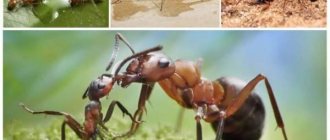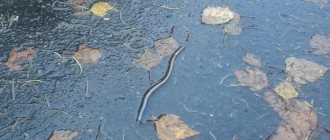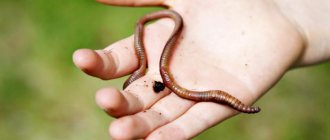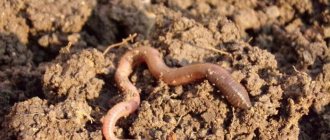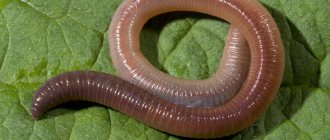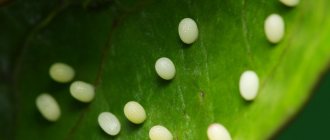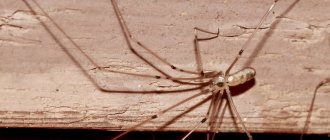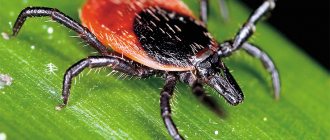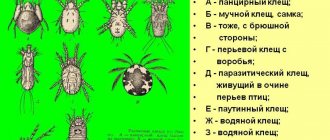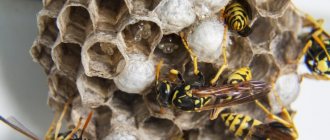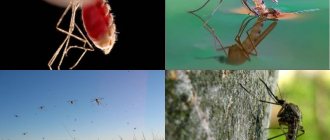Earthworms: why they are useful and how to attract them
Adding an article to a new collection
The presence of earthworms in the soil indicates its health and fertility. These little helpers are capable of processing up to 100 g of plant residues per 1 square meter per year. And 2.5 kg of soil that has passed through their intestinal tract has improved properties and structure.
The more earthworms in the soil, the higher its fertility. Therefore, if there are only a few of them per 1 sq.m. in your garden, it’s time to start attracting them. Let's talk about the basic taste preferences and needs of these useful living creatures.
The benefits of earthworms
Earthworms are the main creators of humus in the soil. No other living organisms, and especially agroreclamation methods, can compete with them in this. It is known that in a day the worm passes through its digestive system as much earth with organic residues as it weighs.
Once in the intestines of the worm, organic matter is enriched with molecules of humic acids, which then, combining with the mineral components of the soil, form calcium humates. These substances prevent soil erosion and make it structural.
And, of course, the great merit of earthworms in processing compost. Thanks to them, organic residues are transformed into a highly effective humus fertilizer, which is easily absorbed by plants and increases their productivity. The amount of humus directly depends on the number of its “producers”.
By making channels in the soil, earthworms contribute to its aeration and mixing, increasing the porosity, air and moisture permeability of the soil. Water, oxygen and nutrients reach the root system of plants faster, and they develop better.
In addition to organic residues, the diet of earthworms includes soil microflora and microfauna, which serve as a source of protein. Along with the soil, worms absorb bacteria, algae, fungi and their spores, and even nematodes.
After these microorganisms are digested by worms, all kinds of enzymes, amino acids, antibiotics and other biologically active substances that suppress pathogenic microflora enter the soil with waste products.
So worms not only enrich the soil with useful substances and vitamins, but also disinfect and deodorize it, regulating the activity of microorganisms. They also contribute to soil deoxidation by releasing calcium carbonate.
Who and what influences the number of earthworms
Earthworms have their own enemies in nature. These are birds, moles, rats, centipedes, frogs, etc. They feed on worms, significantly reducing their population. But the greatest harm is caused to them by human activity.
The use of pesticides negatively affects both the soil and the living organisms living in it. And first of all, earthworms, whose respiration occurs over the entire surface of the skin, suffer from toxic chemicals.
Digging the soil, especially deep, brings them no less harm. In the fall, it destroys the burrows of worms that have settled in them for the winter, and throws them to the surface, where they become easy prey or die from lack of moisture.
In the spring, when digging, the passages made by the worms are destroyed, and they themselves often die under the blade of a shovel or plow. After rains, the soil becomes compacted, oxygen ceases to flow into it, and organic matter does not decompose.
Therefore, it is recommended to cultivate the soil using a fork rather than a shovel. It is advisable to loosen it rather than dig it up. It is also worth neutralizing the soil by adding chalk, lime or dolomite flour.
Who else lives in the soil?
The well-being of the soil is ensured by numerous soil inhabitants, but most of them are so small that we do not notice them. Healthy and fertile soil is full of life: bacteria, fungi, algae, protozoa, mites, springtails, larvae, worms, ants, nematodes, millipedes, enchytraeids and much more.
All depend on each other, many exist in symbiosis. Manipulations with herbicides, fungicides, and insecticides destroy established connections and the vacated living space is very quickly occupied by aggressive forms, most often pathogenic.
Worms feed on dead organic matter, but without soil microorganisms they will not be able to do this. Thus, the clean land beloved by many without a single weed is half dead, its biocenosis is disturbed, it requires constant labor and investment in the form of fertilizing, loosening, weeding, and watering. Instead of soil biota, gardeners work. And vice versa - if there is organic matter in the zone of plant roots, all soil living creatures will actively work there, providing the plants with everything they need.
Methods of gardening and gardening, of course, are everyone’s personal business. But there are already more than a dozen annelids in the Red Book of the Russian Federation, and behind them in the chain are all those who feed on them.
How to attract earthworms to your site
To attract earthworms to a site, it is necessary to create favorable conditions for them to live and reproduce, and also, if possible, protect them from natural enemies, especially moles.
Even if there are few earthworms in the soil, there are probably many of their “sleeping” eggs preserved there, waiting for the right moment to “wake up”. Create the proper conditions for them: a warm and humid environment, the availability of nutritious food, and a safe home.
Direct sunlight is harmful to earthworms; under them they can die in a few minutes. Therefore, invertebrates prefer night “walks” in search of food. The optimal soil temperature for them is 10-15°C.
Mulching the soil helps smooth out differences in day and night temperatures and maintain moisture. Under a layer of fallen leaves, hay or straw, earthworms feel especially comfortable; in the heat they do not need to burrow deeply into the ground.
To provide your “little helpers” with adequate nutrition, prepare supplies of their “favorite dishes”: rotted leaves and manure, food and plant waste. To do this, build a compost pit or place manure in piles, periodically moistening it.
You can also build a worm barn on your property and breed worms in it, receiving useful organic fertilizers from them: vermicompost and vermicelli. The “pets” can be either ordinary earthworms or Californian and Vladimir earthworms specially bred for these purposes, which are also called prospectors.
If there are no earthworms on your site at all, then they can be brought from other places. But spreading them around the garden is not enough. The soil needs to be well moistened, and temporary shelters should be built for the worms from grass and pieces of boards or plywood.
And of course, if possible, you should abandon deep digging of the soil and the use of pesticides, replacing them with folk and biological means of combating diseases and pests.
By making the life of earthworms on your site comfortable and satisfying, you will naturally be able to significantly improve the quality characteristics of the soil on it and increase yields.
Source
What is vermicompost and how is it useful?
Vermicompost is an organic fertilizer that people obtain as a result of processing organic waste with the help of earthworms and beneficial microorganisms.
The use of such natural fertilizer on the site helps solve the following problems:
- reduce the number of pests and weeds on the site;
- bind heavy metal residues and remove residual radiation;
- get a generous and high-quality harvest without the use of chemical fertilizers.
Research project “Why are earthworms needed? And what benefit do they bring?
Natalya Leshchenko
Research project “Why are earthworms needed? And what benefit do they bring?
Relevance of the chosen topic: One of the most dangerous environmental problems today is soil pollution, destruction of its structure, decrease in fertility, and it is the soil that is the creator of food for humans and animals.
Why is modern soil depleted? Excessive chemicalization destroyed the animals of the soil community - the main producers of fertility. Therefore, the idea arose to devote my research work to earthworms . Worms are the creators of the soil , the first farmers. It is their activity that processes humus (humus)
last year's plant remains, manure.
Worms can eliminate the need to apply chemical fertilizers to increase crop yields. This means, firstly, all products grown in vermicompost will be environmentally friendly. And secondly, the absence of chemicals will have a beneficial effect on the environment and ecology in general. By independently producing humus with worms , we use waste rationally and save money by not spending it on chemical fertilizers.
With my work I want to draw attention to these useful underground workers, although they are unattractive animals.
So, the topic of my research : “ Why are earthworms needed ? And what benefit do they bring ?
Purpose: to study the vital functions of earthworms and their role in soil processing.
- read literature on this topic;
— study the characteristics of earthworms and their role in soil formation;
— using experiments to test the hypothesis;
— get an idea about earthworms ;
— find out how worms affect the composition of the soil;
— learn how to make vermicompost at home.
Hypothesis: earthworms increase soil fertility because, by loosening it, they mix the soil with plant residues and saturate the soil with oxygen. Object of study : earthworms .
Subject of research : life of earthworms .
Practical significance of the work: expanding knowledge about the animal world and applying the information obtained to preserve and increase soil fertility.
From the encyclopedia and the Internet we learned:
Habitat and species of earthworms .
According to the characteristics of their biology, earthworms can be divided into litter-dwelling, soil-litter, burrowing and burrowing. Litter and burrowing worms inhabit places with waterlogged soils - the banks of reservoirs, swampy soils, soils of humid subtropics. In the tundra and taiga, only litter and soil-litter forms live, and in the steppes - only soil forms. Earthworms best in coniferous-deciduous forests: all types live in these zones.
Such inconspicuous and small animals have a complex internal structure. Worms have a heart , blood vessels, stomach, intestines and other internal organs. The circulatory system of worms is closed , quite well developed, and the blood is red. Breathing is carried out through the skin, rich in sensitive cells, which is covered with protective mucus. The nervous system of earthworms consists of a poorly developed brain (two nerve ganglia)
and abdominal chain.
They have a developed ability to regenerate. Earthworms do not tolerate direct exposure to sunlight: drying out of the integument leads to the death of the animals. Therefore, during the day the worms are underground, and in the evening and at night they usually rise to the surface, where they eat organic debris.
In winter, earthworms hibernate . Due to the fact that frosts instantly kill earthworms , they prefer to burrow deeper into the ground, where frost does not penetrate. In spring, when the temperature reaches a suitable level and the ground is saturated with rainwater , earthworms become very active. The life of an earthworm is quite long ; under favorable conditions, worms live for decades . Birds, moles and humans pose a danger to them. also pose a serious threat to the life of the earthworm . Many worms die in the summer due to drought, and in the winter due to severe frosts. All these conditions shorten the lifespan of earthworms , which are the best helpers for gardeners. The role of earthworms in soil formation .
We found worms We found them under large stones, stumps, and in compost pits on the site. There were 30 large worms , about 9 cm, and 26 small ones, about 5 cm.
Experiment No. 1 Observation of the movement of an earthworm .
Having found the worms , I placed them in a glass jar. Imagine my surprise, after a while “escaped” from me
.
I had to go hunting and collect worms . Fortunately, on my grandmother’s plot there were many heaps of plant debris, where there were a lot of worms . Worms also lived under large stones and stumps, where it was damp. Based on the experimental data, we can conclude: worms are prone to migration and, if their freedom is not limited, they will crawl away. You can’t explain to them that they should live here.
Experiment No. 2 Looking at an earthworm through a magnifying glass .
Having planted a new batch of worms in a jar , I watched them move along the walls of the jar. We took the worm in our hands and found that its skin was wet and covered with mucus. This mucus facilitates the movement of the worm in the soil . In addition, only through wet skin does oxygen necessary for breathing penetrate.
If you look at an earthworm through a magnifying glass , you can see how it moves. The body of an earthworm consists of rings (segments)
and is covered with mucus, which helps it move easily underground.
Under the skin there are muscles fused with it. Circular muscles make the body of the worm thin and long , and longitudinal muscles shorten and thicken it. Thanks to the alternating work of these muscles, movement occurs. You can also see the “Belt”
of the worm - a special thickening that is part of the reproduction system.
Here the head end slowly stretches forward. The middle is pulled towards it, but the rear end is still motionless. It serves as a support, relaxes, and then pulls up. This is how the worm moves forward . Alternately, contracting, then lengthening, expanding and shortening due to the muscles, it moves in the head direction. The worm made such movements .
As a result of the observation, we can conclude that the streamlined and cylindrical shape of earthworms and the flexibility of the body allow them to move easily and quickly under the thickness of the earth.
Experiment No. 3 Movement of a worm on a wet surface. If you put an earthworm on a wet surface, it cannot move forward, why? Because the bristles on the worm’s serve as a support for it, and on a wet surface the bristles slide, and the worm cannot move, much like you and I on ice.
Experiment No. 4 Can an earthworm ? Can an earthworm ? How to check? If you put a worm on a surface and clap your hands, for example, the worm will not , but if you knock on the surface on which it is crawling, the worm will react . This means that the worm does not hear , but only feels vibrations and vibrations, but it has no hearing.
Experiment No. 5 The structure of an earthworm . Does an earthworm have eyes or a head? To find out, just watch it - whichever side the worm crawls forward , there the head will be. The earthworm has no eyes because it spends most of its life underground, and there is no light or sun there, so it does not need . But it can distinguish between light and dark, this can be checked as follows: put the earthworm on a tray , which is half in the shade, and the other half of the tray is in bright sun. The worm tends to crawl to where it is darker.
Experiment No. 6 What does a worm ? Can an earthworm recognize odors ? To check this, place a piece of garlic in the path of the worm . The worm will crawl in the other direction, because it obviously doesn’t like the smell of garlic. From this we can conclude that earthworms recognize .
You can stroke the worm and feel the bristles on its body, which also help it move in space and move through the ground.
Experiment No. 7 What color is an earthworm . What color are earthworms ( brown)
Why?
Let's put the worm on colored paper , brown, green, yellow. the earthworm least visible ? On brown, because this is a protective color for the earthworm .
Experiment No. 8 Where is the earthworm's tummy and back ? Where is the earthworm's belly and back ? To see the tummy, you need to turn the worm on its back
.
And we will see that the lower part is lighter than the upper “back”
.
But the worm will immediately turn over, which means that it doesn’t care which side is up.
Experiment No. 10 Daylight and the vital activity of worms . During the experiment, the container with earthworms was in a thick cardboard box that did not allow light to pass through. And the container was taken out only for watering and feeding the worms . At the same time, it was sometimes possible to observe the appearance of worms near the walls of the container or on the surface of the ground. daylight hit , they immediately tried to hide by burrowing into the ground. As a result, we can conclude that earthworms appear on the surface of the earth and feed at night.
Food for earthworms includes insects , rotting animal remains, manure, decomposed plant remains of herbs and organic matter. Having discovered food, they begin to dig in the ground, holding the food they find in their mouths. Worms really like to combine food with soil. The hypothesis was confirmed. Earthworms increase soil fertility because, by loosening it, they mix the soil with plant residues and saturate the soil with oxygen.
Earthworms are very numerous in the soil, and their activity is of great importance in soil-forming processes. By burrowing in the ground, worms loosen the soil and thereby open up access to air and water necessary for the complete decomposition of organic matter. They drag rotten leaves and other plant and animal remains inside their underground passages and thereby contribute to enriching the soil with humus, and, rummaging in the depths, they pass the earth through their intestines, mix the soil and increase the thickness of its fertile layer. On loosened, mixed and humus-enriched soil, vegetation develops luxuriantly. What is the use of an earthworm ? Plants need water and air, which enter the soil with the help of worms , because they loosen it, laying their underground tunnels, and through them air and water flow to the plants. When earthworms dig , they plow the soil at the same time, which allows roots to grow, allowing for healthy plant growth. Tilled soil absorbs water and holds it inside. In addition, air circulates better in such soil. The movements of earthworms bring nutrients found deep in the soil to the surface. Nutrients enter the upper layers of the soil, where they are easier for plants to absorb. When we see a blooming garden, we understand that to some extent it is thanks to earthworms , which enrich the soil with nutrients. These creatures process organic matter in the soil, turning it into nutrients that are easily absorbed by plants. In conclusion, we would like to conclude that earthworms are amazing animals! Conclusion: earthworms and soil microflora play a major role in the decomposition of organic matter and in enriching the soil with humus and other plant nutrients.
Source
Lifestyle of worms underground
Worms are nocturnal. At this time of day you can observe their most active activity. At night they eat most of the food. Many crawl out to consume food, but rarely get out of their burrows completely - their tails always remain underground. During the day, worms plug their holes with various objects, such as tree leaves. They can drag small particles of food into their burrows.
For reference. The body of worms is very stretched, thanks to numerous segments. In addition, the worms have very tenacious bristles. In this regard, forcibly pulling him out of the mink is a rather difficult undertaking.
Feeding earthworms
Earthworms are omnivorous. They have a very characteristic diet. First, they swallow a large amount of soil, and then absorb only useful organic substances from it.
Worms are able to digest even small quantities of animal feed, such as meat.
Eating of food occurs in burrows. First, the worm gropes for a tasty morsel from the outside and drags it into its hole, where the meal takes place. In order to capture the food object, the worm attaches itself very strongly to it, then pulls back with all its strength.
Moreover, the worms make a supply of food for themselves. They very carefully put it in their burrows. Worms can also deliberately dig another hole just to store food. They seal such a hole with damp soil and open it only if necessary.
Earthworms feed in the following order. First, the soil is swallowed, then the organic substances are digested inside the worm. After this, the worm crawls out and excretes excrement. Moreover, it stores waste products in one specific place. Thus, before entering the hole, a kind of pile of worm excrement is formed.
Life of worms
The life of earthworms has a very long history. They played a huge role in soil formation. It is thanks to them that we see the earth as it is today.
Worms are constantly engaged in digging activities, as a result of which the layer of earth is always in motion. Worms have a very large appetite. In just one day, he can eat a volume of food that is comparable in weight to him, that is, 3-5 grams.
As a result of their activity, worms contribute to the best growth of plants. Let's not even take into account the fertilizer they produce. Worms loosen the soil and facilitate better penetration of oxygen and water into it. Plant roots grow much better in worm holes.
As a result of constant loosening of the soil, large objects gradually sink deeper into the earth. Small foreign particles are gradually ground into the stomachs of worms and turn into sand.
Unfortunately, the number of earthworms in our country is declining. This is facilitated by the inappropriate use of chemicals to “fertilize” the soil. To date, 11 species of earthworms have already been included in the Red Book of Russia. Why use chemicals to fertilize the soil when there is such a miracle of nature as vermicompost?!
Earthworm: lifestyle, habitat and benefits for the soil
Many people underestimate the importance of the work of earthworms. These representatives of the invertebrate kingdom are best known for crawling out of the ground in large numbers after heavy rain. They are often used as bait by numerous fishing enthusiasts. Darwin also noted the fact that worms perform an important function in nature, acting as a kind of agricultural technicians. In the process of creating an extensive system of tunnels, which the earthworm digs through, excellent aeration is formed by supplying air to the inner layers of the soil.
Thanks to excellent aeration, the respiratory activity of many plants is facilitated. Feeding on organic matter and waste, worms ensure the grinding of soil components, enriching them with their secretions. The amazing ability of representatives of this species is the ability to disinfect large areas of soil, sterilizing it from harmful bacteria. Thanks to countless holes, forming a kind of capillary system, ideal drainage and aeration of the soil is ensured.
Features of earthworms and habitat
The body of an earthworm can reach three meters in length. However, on the territory of Russia there are mainly individuals whose body length does not exceed 30 centimeters. In order to move, the worm uses small bristles, which are located on different parts of the body. Depending on the variety, there can be from 100 to 300 segments. The circulatory system is closed and very well developed. It consists of one artery and one central vein.
The structure of an earthworm is very unusual. Breathing is realized with the help of special hypersensitive cells. The skin produces protective mucus with a sufficient amount of natural antiseptics. The structure of the brain is quite primitive and includes only two nerve nodes. Based on the results of laboratory experiments, earthworms have confirmed their outstanding regeneration abilities. The severed tail grows back after a short period of time.
The genital organs of the earthworm are also very unusual. Each individual is a hermaphrodite. She also has male organs. Based on biological factors, all such worms can be divided into several subgroups. Representatives of one of them search for food on the surface of the soil layer. Others use the soil itself for food and emerge from the ground extremely rarely.
The earthworm is a type of annelid. Under the skin layer there is a developed muscle system, consisting of muscles of various shapes. The mouth opening, from which food enters the esophagus through the pharynx, is located on the front of the body. From there it is transported to the area of the enlarged goiter and the small size of the muscular stomach.
Burrowing and bedding earthworms live in places with loose and moist soil. Preference is given to moist soils of the subtropics, marshy lands and the banks of various reservoirs. In steppe areas, soil varieties of worms are usually found. Litter species live in the taiga and forest-tundra. The coniferous broad-leaved strip can boast the highest concentration of individuals.
What kind of soil do worms like?
Why do earthworms love sandy loam and loam soils? Such soil is characterized by low acidity, which is best suited for their life. Acidity levels above pH 5.5 are detrimental to the organisms of these representatives of the ringed type. Moist soils are one of the prerequisites for population expansion. During dry and hot weather, worms go deep underground and lose the opportunity to reproduce.
Description and appearance
An earthworm is a type of annelid worm. If we consider a more detailed classification, the animal belongs to the class of tapeworms, to the subclass - small bristles or oligochaetes.
Body size ranges from 2 cm to 3 m, but adults of most species grow to 7–25 cm. In cross-section, the body is almost perfectly round. The color of earthworms is reddish-brown (the ventral side is slightly lighter), the intensity of the red or brown tint depends on the age, species and habitat of the individual.
The body structure of the worm is similar to other representatives of this type. Like other annelids, the earthworm's body consists of many ring-shaped segments, each of which is separated from each other by a shallow constriction.
Thanks to this feature of the external structure, the animals received their name - ringed. The number of segments varies from 80 to 300, depending on the type of individual. Each segment has up to several dozen short bristles on which the worm rests during movement.
Studying what the body of earthworms is covered with, experts discovered that this is a substance containing various antiseptics and enzymes. Mucus is necessary for invertebrates. It facilitates underground movement and breathing, protects the body from drying out, is used in the process of reproduction and promotes accelerated tissue regeneration.
The sense organs of earthworms are very poorly developed. Unlike their fairly close relatives, the polychaete worms, small bristle worms do not have eyes. Their function is performed by special light-sensitive cells on the skin. Epidermal receptors are distributed throughout the skin, which act as organs of touch and smell.
All existing earthworms can be divided into two types:
- live and feed in the top layer of soil and on its surface;
- burrowing and feeding at great depths.
The first are called litter and do not go deeper into the ground than 10–20 cm, while the second are burrowers and live at a depth of 1 m or more.
Character and lifestyle of the earthworm
The active and productive life of an earthworm occurs at night. As soon as night falls, many individuals crawl to the surface of the ground in search of food. However, the tail usually remains in the ground. By morning, they return to their holes with prey, dragging pieces of food into them and masking the entrance to their shelter with blades of grass and leaves.
The role of earthworms in nature is difficult to overestimate. The worm literally passes an incredible amount of soil mixture through itself, enriching it with beneficial enzymes and killing harmful substances and bacteria. The worm moves by crawling. Retracting one end of the body and clinging to the roughness of the ground with its bristles, it pulls up the back part, making its many passages in a similar way.
How do earthworms survive winter?
During the winter, the vast majority of individuals hibernate. A sharp drop in temperature can instantly destroy worms, so they try to burrow into the soil to a depth in advance, often exceeding one meter. Earthworms in the soil perform the most important function of naturally renewing it and enriching it with various substances and microelements.
Benefit
In the process of digesting semi-fermented leaves, the worms’ body produces specific enzymes that contribute to the active generation of humic acid. Soil that has been loosened by earthworms is optimal for a wide variety of representatives of the plant kingdom. Thanks to a system of intricate tunnels, excellent aeration and ventilation of the roots is ensured. Thus, the movement of the earthworm is an important factor in the task of restoring the beneficial qualities of the soil.
The earthworm is in fact very useful for humans. It makes the soil layers fertile and enriches them with all kinds of nutrients. However, the total number of individuals in many regions of Russia is rapidly declining. This happens due to the uncontrolled introduction of pesticides, fertilizers and mineral mixtures into the soil. Earthworms are also hunted by numerous birds, moles, and various rodents.
Why do earthworms come out after rain?
After rain, you can see a large number of worms on the asphalt and soil surface, what makes them crawl out? Even the name “earthworms” indicates that they love moisture very much and become more active after rain. Let's consider several possible reasons why earthworms crawl out to the surface of the earth after rain.
Soil temperature
It is believed that worms crawl to the surface in search of warmth, since after rain the soil temperature drops by several degrees, which causes discomfort for them.
Changes in acid-base balance
Another theory says that the worms crawl to the surface due to a change in the acid-base balance of the soil after rain, it becomes more acidic, which negatively affects these diggers. According to researchers, emergency evacuation to the soil surface saves them from death in an acidic environment.
Lack of air
The third theory explains that after rain there is more oxygen in the top layer of the soil, so the worms crawl up en masse. Water enriches the upper layers of the earth with oxygen, and many species of worms love moisture and vitally need sufficient oxygen. And through the surface of the body, oxygen is absorbed best in a humid environment.
Trips
British scientist Chris Lowe suggested that worms crawl to the surface of the earth during rain in order to make a long journey to new territory. On the surface, worms are able to crawl much further than underground, and dry soil causes discomfort when moving, strong friction is created, and grains of sand stick to the surface of the worm’s body, injuring it. And after rain, the surface of the earth is highly moistened, which allows them to freely travel to new areas of the ground.
Sounds of the rain
Another scientist, Professor Joseph Gorris from the USA, suggested that earthworms are frightened by the noise of rain, since the vibrations it creates are similar to the sound of the approach of their main enemy, the mole. That is why some fishermen use a technique to lure bait to the surface: they insert a stick into the ground, attach a sheet of iron to its surface and pull it so as to create a vibration, which will be transmitted into the ground through the stick. When frightened, the worms climb to the surface of the earth and become easy prey for experienced fishermen.
Reproduction and lifespan of earthworms
The earthworm is a hermaphrodite. It has both female and male genital organs. However, it is not capable of self-fertilization. With the onset of warm climatic conditions required for reproduction, individuals crawl in pairs, touching each other with their abdominal region, and perform a kind of seed exchange. Afterwards, the muff is transformed into a cocoon, in which the eggs develop.
Some varieties are distinguished by asexual reproduction. The worm's body splits in two, with one part regenerating the front end and the other regenerating the back end. There are also species of worms that reproduce without spermatheca by laying spermatophores. The lifespan of worms can exceed ten years.
Source
Reproduction
Earthworms are asexual hermaphrodites, capable of producing offspring within six months. They reproduce by cross-fertilization and find each other by smell on warm, humid evenings. In a wide belt on the body, fertilization and development of eggs occur, which are then laid in cocoons in the soil. Depending on weather conditions, up to 20 larvae hatch from the eggs within 1-5 months. And after another 3-4 months, the larvae become adults.
With good nutrition, earthworms reproduce very quickly. Over the course of a year, they can give birth to up to a thousand of their own kind.
